Grouping ELL (English language learner) students in the classroom isn’t a topic that comes up very much. Yet it’s very relevant to teachers and administrators. How students are positioned in the elementary school setting can make or break their learning experience. It can be the difference between inclusion and isolation. The difference between support and neglect. Although they may seem like small, quick decisions made about student placement and seating, we have the opportunity to make a powerfully positive impact on students’ learning experiences.
Every district and school is unique, so there’s not a one-size-fits-all approach to grouping ELL students in the classroom. However, there are some key understandings we have about language development which are relevant across the board. Let’s take a moment to consider a few best practices. These can help us make decisions based on what is best for our students.
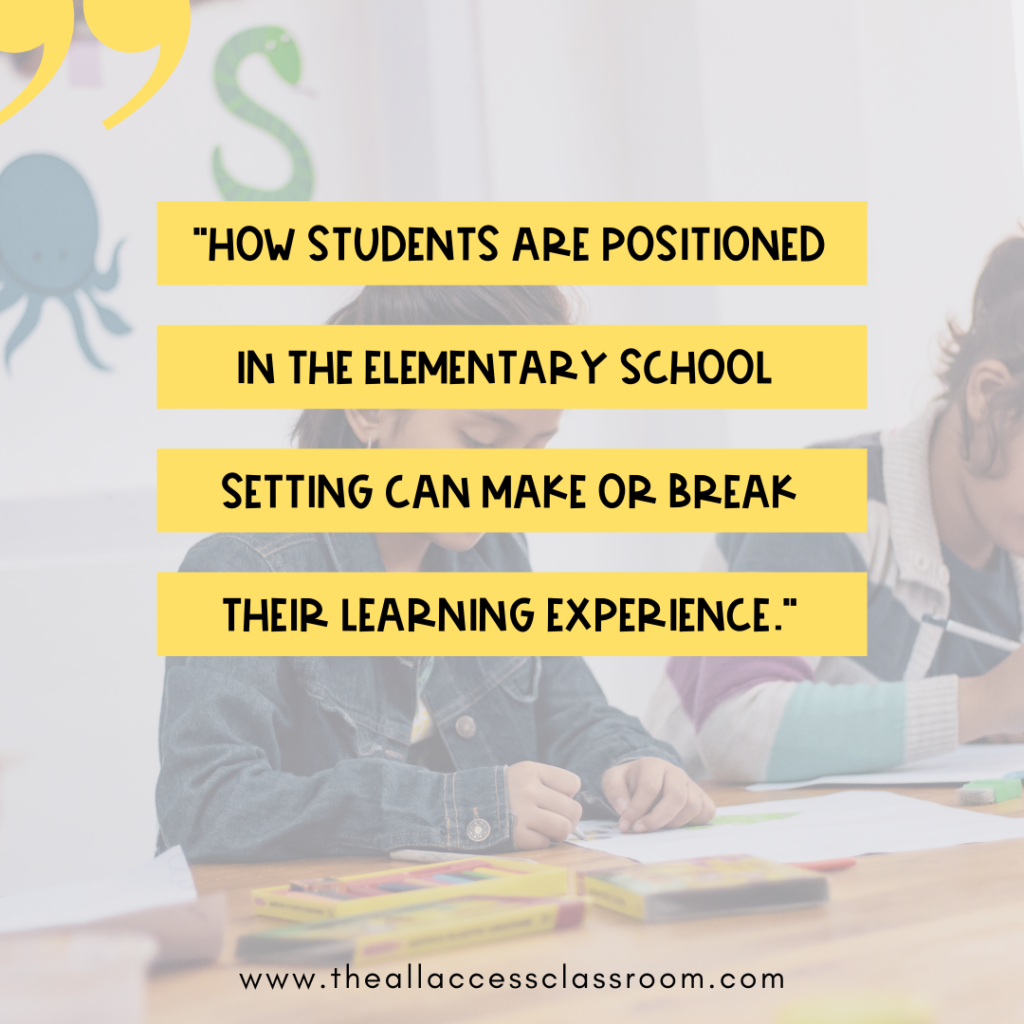
1. Every English Learner Deserves a Supportive Environment for Learning
How should English learners be placed among a single grade-level team of teachers at the elementary level? This question comes up at the end of each school year and/or over the summer. For traditional school settings where English learners are not the majority, there are various ways the ELLs may be placed in classrooms. There are essential questions that should be asked. How can we place ELLs where they will receive the most equity of access to learning, and quality of service? What will provide the most supportive environment for learning?
The recommendation of myself and other ELL specialists is to group, or cluster, the English learners together in one or two classrooms at each grade level. The reasons for this approach are clear when schools consider a few factors.
ELLs Learn Best When Their Affective Filter is Low
The affective filter is a metaphor that describes a learner’s attitudes that affect the relative success of second language acquisition. Negative feelings such as lack of motivation, lack of self-confidence and learning anxiety act as filters that hinder and obstruct language learning. (Colorin Colorado) When an English learner is isolated in a classroom with no peers who share his/her primary language, the resulting level of anxiety may create an obstacle to learning. On the other hand, when an ELL has same-language peers present, they may feel more comfortable, safe to take risks, and more willing to engage.
Clustering Fosters Greater Teacher Collaboration
In many districts, ELL specialists have multiple teachers, grade levels, and even schools to serve. Yet we know that when EL specialists and mainstream classroom teachers are able to collaborate, confer, and/or co-teach, the English learners benefit. With fewer unique classrooms to cover, ELL specialists may have greater capacity to know and reinforce content learning. They will have fewer teachers and classrooms to become familiar with. More time for consultation, coaching, and support will open up. Generally, the quality of support provided to ELLs will increase if the students are clustered into 1-2 classrooms per grade level.
Consider this analogy. Let’s say you are in the hospital with a condition that a certain medical specialist needs to treat. Your primary doctor has told you that the specialist covers patients at multiple hospitals, and won’t be able to see you much in person or attend status reviews on your treatment. The specialist will come for a visit, but hasn’t been able to consult with your primary doctor on what’s going on. But what if, instead, that specialist worked at only two hospitals, knows them well, is familiar with the physicians and your case, and consults regularly about your health needs? Wouldn’t you want the higher quality treatment from a specialist who is integrated into your health journey more directly?
I’ll let you make the application to our students’ learning experiences. They need their ELL teachers to be as available, connected, and integrated as possible.
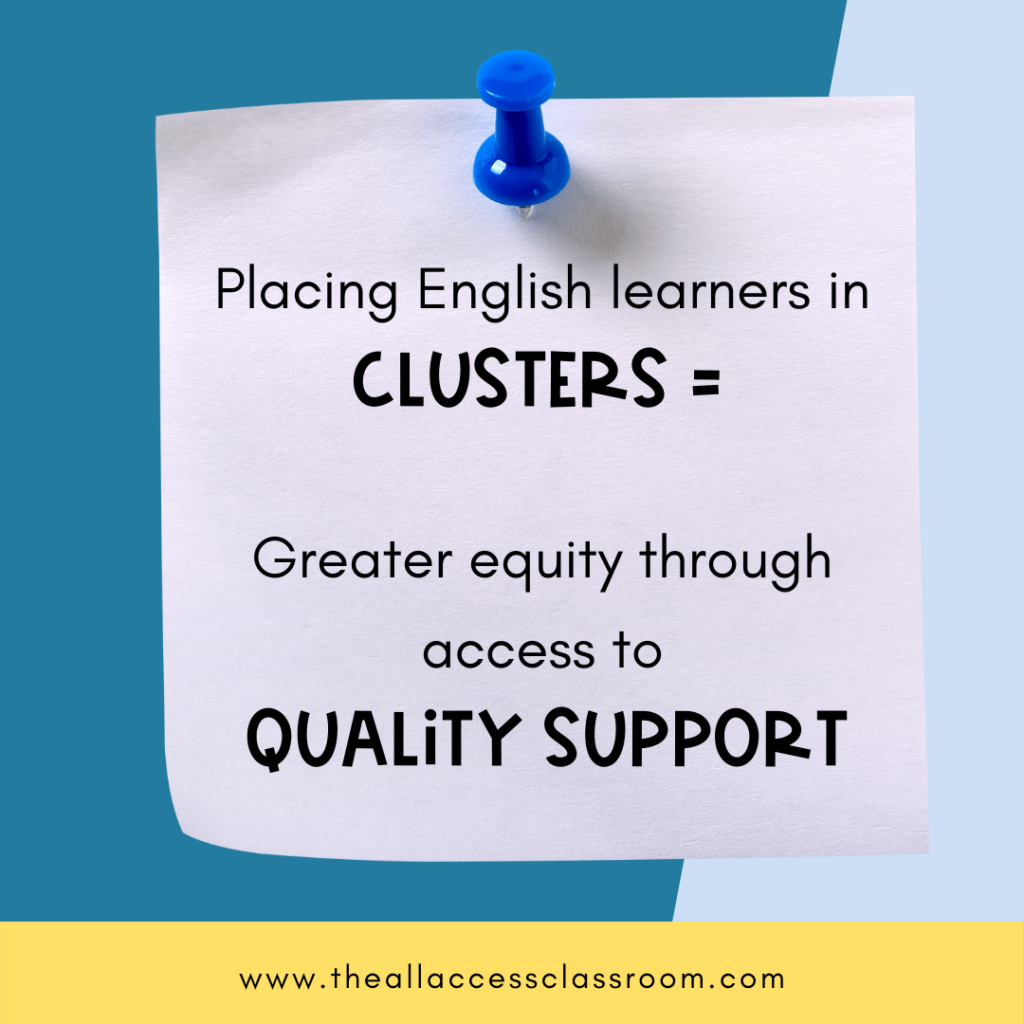
A Few Thoughts
When clustering students, it is important that the ELLs be placed with the teacher(s) having the most experience and training in working with English learners. Also, when the number of ELLs in a single classroom grows larger than 4-6, or about 25% of the class makeup, it may be advisable to spread the students across one more classroom at that point. This will enable the ELL students to learn alongside English-speaking peers, while still receiving quality service and attention from the EL specialist.
Some may misunderstand this clustering approach to reflect a kind of “tracking” or separating the ELLs from their non-ELL peers. However, these concerns need not apply, as all students in the classroom will be learning the exact same grade-level content. What should take precedence is placing students where they will have equitable access to that grade-level content. In many cases, this is most likely to occur in the clustered group format.
2. Classroom seating strategies for ELLs
Seating Newcomers
Ok, let’s talk about your classroom seating strategies for ELLs. Where you seat and position students in the classroom has a great impact on how well they will be supported.
For a newcomer, you should place them next to an English-speaking student who is confident, encouraging, and positive. If this student happens to speak the language of the ELL, this is ideal. The student be there to offer essential support. They can model the language and procedures of the classroom. Some teachers may have concerns that this “buddy” approach may result in the English-speaking buddy becoming burned out. Or they worry that the ELL student will rely too heavily on the buddy. Keep in mind that the buddy student can change periodically. Using your teacher discretion and observation, if you feel that change is in order, it is appropriate as long as the new buddy has the qualities above.
Also, you may wish to place the newcomer ELL close to your teacher desk area for ease of supportive communication. Another desk position that can be helpful is close to posted instructional information. Students will need to see anchor charts or word walls for frequent reference.
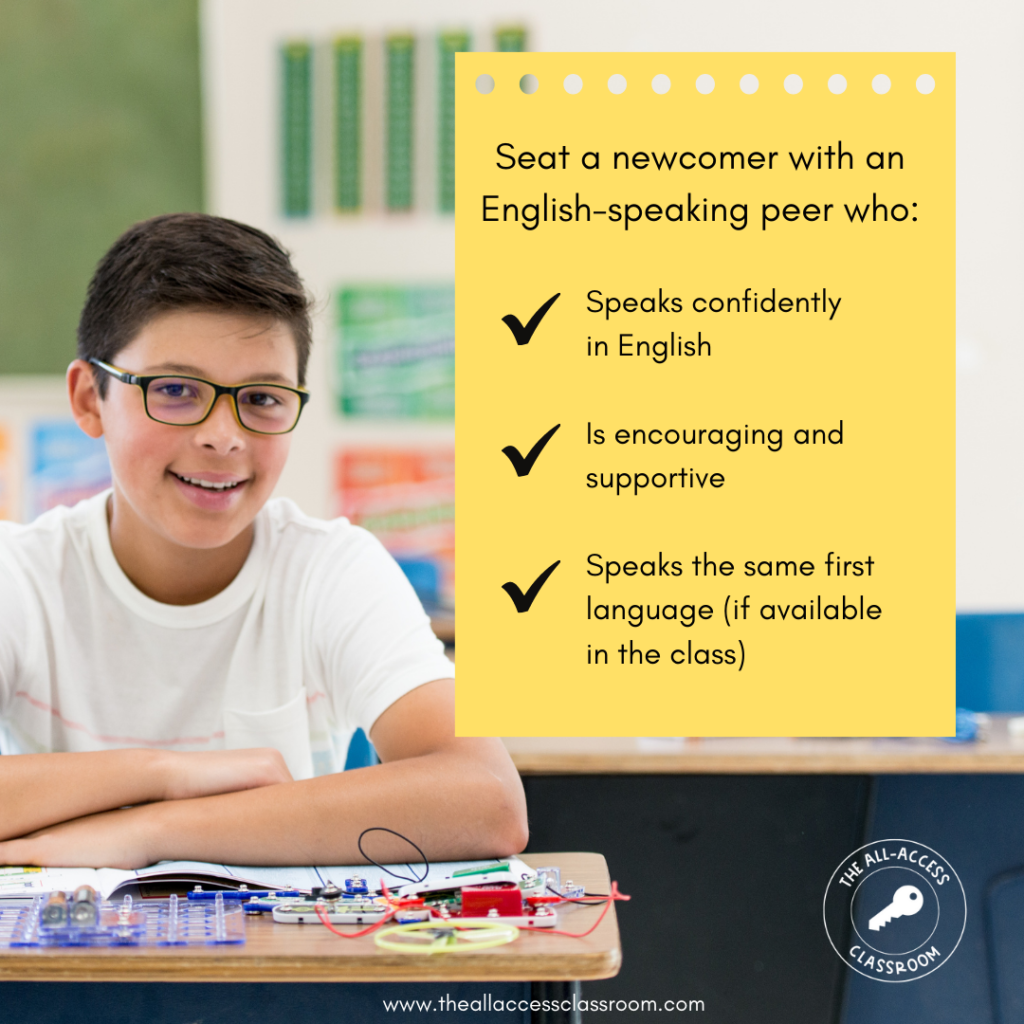
General Desk Arrangement
As far as desk arrangement in general, placing ELLs (at any proficiency level) in desk groups or teams has several benefits. It will encourage collaboration, teamwork, and (most importantly) oral communication. Students must have numerous opportunities to talk throughout the day in order to learn English. Facing their peers through directed learning activities will provide this. Flexible seating can also work, offering the ELL a chance to listen and speak in a variety of group settings.
Classroom seating strategies have a significant impact on ELL learning. You will likely tweak your format throughout the school year, as you find what works best to support your ELLs.
3. Grouping ELL Students in the Classroom for Collaborative Work or Reading Groups
Collaborative work in pairs or teams is an essential element of a student-centered classroom. Opportunities to share, create, and problem-solve together are wonderful for language development. The most important thing to remember as you’re grouping ELL students in the classroom for this purpose is to ensure proper supports are in place. As you set up a new collaborative activity, consider how you may need to explain directions. It may be helpful to model expectations, or demonstrate the outcome you’re wanting for the groups.
Depending on the ELL you are considering, you may want to keep them together with their peer buddy as groups move into action. Unexpected shifts to unsupported or confusing activities can raise that affective filter for students, leaving them disengaged and sidelined. To prevent this, either allow for peer support, or (if you’re in the process of gradually moving the student to more independence) ask yourself what scaffolds you should continue to offer. With the right preparation and structure, ELLs can thrive in group settings!
For your literacy small groups, Valentina Gonzalez recommends that you group students based on their reading level or focus skill. There should be a mix of ELL and non-ELL students. Once the small group instruction is taking place, intentional scaffolds and comprehension supports should be present. In this way, your ELL is getting equal access to core instruction through teaching that is considerate of their language needs. See Reading and Writing with English Learners (Gonzalez and Miller, 2020)
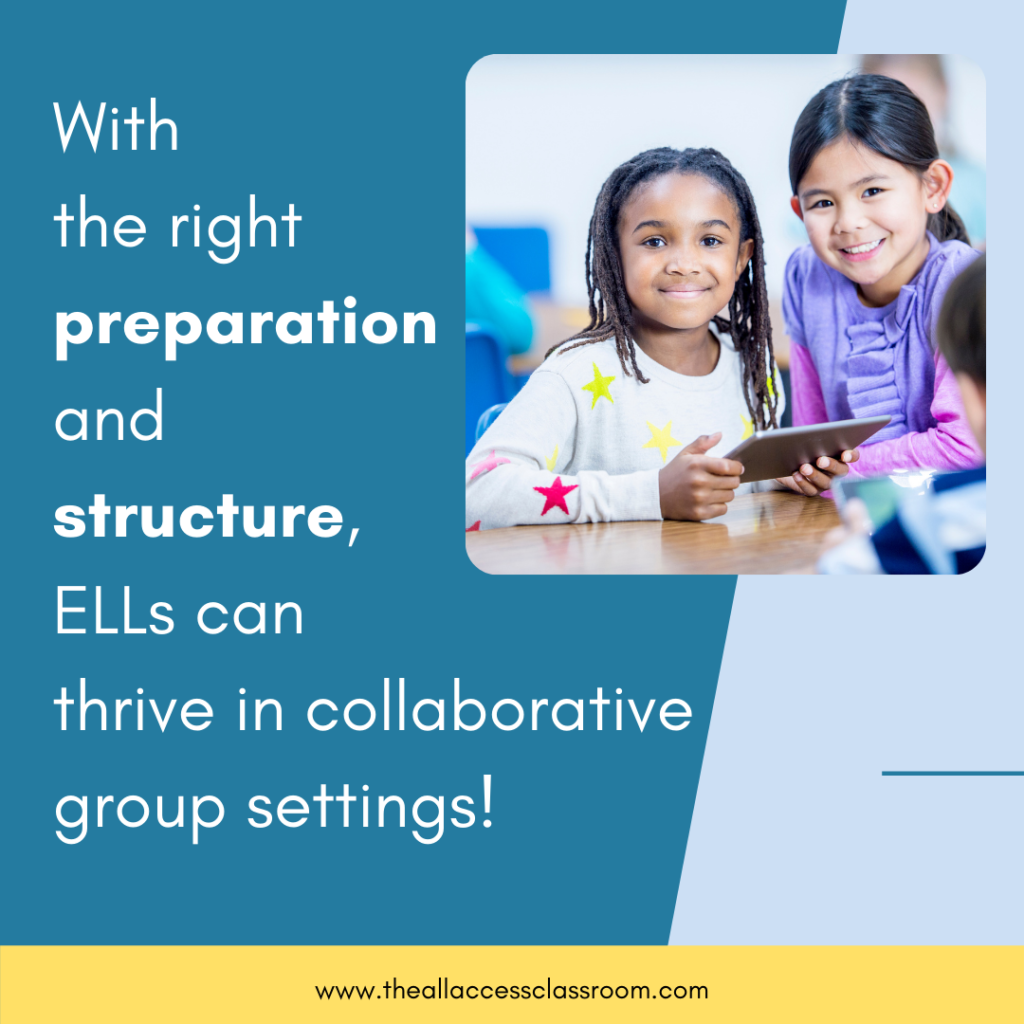
You Might Also Enjoy:
How Clustering Our ELs Benefits Everyone (Tan Huynh)
How to Create a Welcoming Classroom Environment for ELLs (Colorin Colorado)
One of the Most Important Activities for End of School Year Closure: Asset-Based Learner Profiles (The All-Access Classroom)
How to Unlock Prior Knowledge as a Reliable Way to Boost Student Comprehension (The All-Access Classroom)
I hope this information can be helpful to you and your colleagues as you make instructional decisions! I’d love to hear more about you and your English learners, so find me on Facebook or Instagram, and let’s chat!


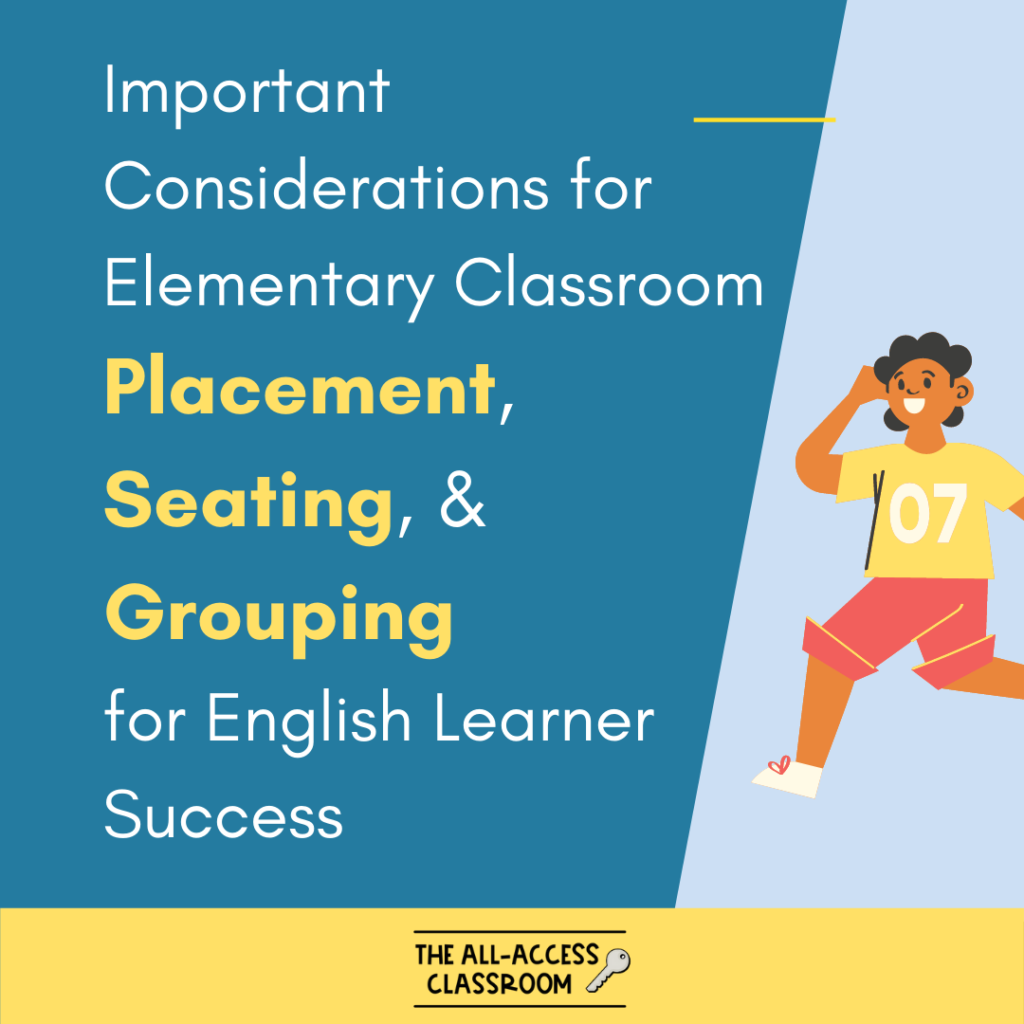

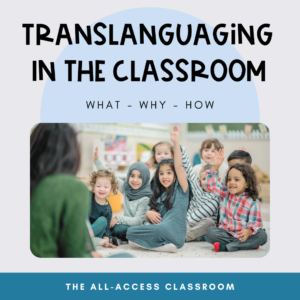


One Response